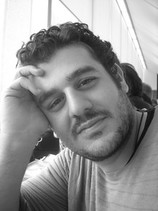- The tutorials on Monday 12 Dec will be held at the University of Oulu (TS101).
The IPTA2016 tutorials will be held on December 12th, 2016, followed by the main conference. They will be half-day tutorials (about three hours). More information and the list of tutorials will be announced on this page.
Confirmed Tutorial Lecturers

Dr. Stefanos Zafeiriou
Title: From Active Appearance Models and Mnemonic Descent to 3D Morphable Models: A brief history of statistical deformable models with examples in Menpo (See PDF slides).
Abstract: Construction and fitting of Statistical Deformable Models (SDM) is in the core of computer vision and image analysis discipline. It can be used to estimate the object’s shape, pose, parts and landmarks using only static imagery captured from monocular cameras. One of the first and most popular families of SDMs is that of Active Appearance Models. AAM uses a generative parameterization of object appearance and shape. The fitting process of AAMs is usually conducted by solving a non-linear optimization problem. In this talk I will start with a brief introduction to AAMs and I will continue with describing supervised methods for AAM fitting. Subsequently, under this framework, I will motivate current techniques developed in my group that capitalize on the combined power of Deep Convolutional Neural Networks (DCNN) and Recurrent NN (RNNs) for optimal deformable object modeling and fitting. Finally, I will show how we can extract dense shape of objects by building and fitting 3D Morphable Models. Examples will be given in the publicly available toolbox of my group called Menpo (http://www.menpo.org/).

Prof. Jiri Matas
Title: Visual Object Tracking (See PDF slides)
Abstract: Visual tracking is a core video processing problem with many applications, e.g. in surveillance, autonomous driving, sport analysis, augmented reality, film post-production and medical imaging.The tutorial will focus on single object short and long term causal tracking. After brief introduction and analysis of weaknesses of the classical short-term methods like KLT and tracking by correspondence of interest points, methods that showed state-of-the-art performance in recent evaluations (VOT 2016, 2015) -- variants of the Kernel Correlation Filters and CNN-based approaches will be covered. The concept of long term tracking will be explained on the Tracking-Learning-Detection (TLD) trackers. Tracking methods differ in many aspects such as the speed, the complexity of the model of the tracked entity, the geometric transformations assumed, the mode of operation -- casual and non-causal, the ability to adapt and learn, the robustness to occlusion and assumptions about the observer. The diversity makes performance evaluation, a critical tool for assessing progress, a non-trivial. We will discuss the currently used evaluation methodologies and the lessons learned from VOT benchmarking activity.
